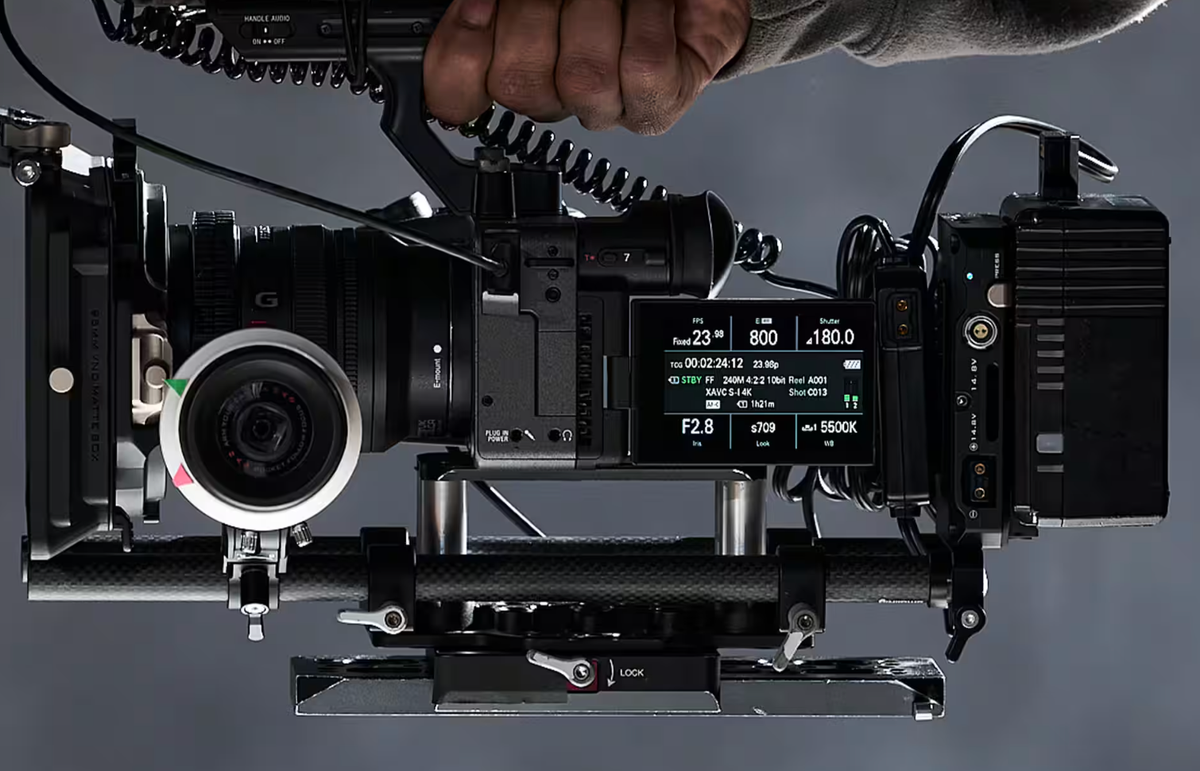Sony FX2: Great Sensor, Questionable Choices (Is It Right For YOU?)

Sony's Cinema Line has earned a reputation for powerful, purpose-built filmmaking tools. The recent arrival of the full-frame FX2, however, has sparked significant debate. While it inherits a highly regarded sensor, several design and specification choices leave its position within the professional lineup feeling confusing and difficult to justify at its current price point.
The Elephant in the Room: The Fixed Tilting EVF
The most immediately perplexing feature is the fixed, tilting electronic viewfinder (EVF). While viewfinders are essential on larger cinema cameras for shoulder-mounted operation or tripod work, their necessity on a compact body like the FX2 is questionable. The vast majority of users for this form factor will rely on the rear screen or external monitors. Crucially, the FX2's EVF is not removable. This creates several issues:
- Bulk & Vulnerability: The EVF protrudes significantly, increasing the camera's profile. This makes packing it into tight spaces problematic and raises concerns about the EVF's long-term durability if frequently jostled in bags.
- Versatility Sacrificed: An optional, detachable EVF would offer far greater flexibility. Users who need one could attach it for specific shoots, while others could enjoy a sleeker profile. Its permanent fixture feels like an odd compromise forced upon all users.
A Screen Step Backwards
Compounding the EVF confusion is the rear LCD screen. In 2025, the FX2 sports a 1.04 million-dot resolution screen. This is identical to the screen found on the older Alpha 7 IV. The problem? Both the FX3 and the more affordable, APS-C FX30 feature higher resolution screens. Delivering a lower-spec screen than cameras positioned below and alongside it within the Cinema Line feels like a significant regression, especially at this price tier. While cost-saving re-use of components is understandable, it clashes with the premium positioning.
Performance Quirks: Crops, Codecs, and Cards
Under the hood, the 33-megapixel full-frame sensor delivers beautiful images – clean, high dynamic range (reportedly exceeding 15 stops in some tests), and excellent low-light performance that holds up remarkably well even against lower-resolution "low-light beast" sensors. The inclusion of a fan is a major plus for sustained recording, especially compared to its stills-oriented sibling.
However, the video specifications raise eyebrows:
- 4K60 Crop: Like the Alpha 7 IV, the FX2 applies a 1.5x crop when shooting 4K at 60fps. Competitors in its class, and even Sony's own higher-end Cinema Line cameras (FX3, FX6), offer uncropped 4K60. For a camera branded within the professional video line, this crop feels like an unnecessary limitation in 2025.
- 1080p120 Limitations: Slow-motion enthusiasts will find only 8-bit 4:2:0 recording available at 1080p/120fps. While functional, this codec depth and chroma subsampling fall short of the 10-bit 4:2:2 quality achievable in similar modes on other cameras (even non-cinema models), offering less flexibility in post-production.
- Single CFexpress Type A Slot: Departing from the dual CFexpress Type A slots found on the FX3 and FX30, the FX2 reverts to a hybrid slot configuration (one CFexpress Type A/SD UHS-II, one SD UHS-II). This feels like a step backward for a Cinema Line camera where redundant recording is often crucial.
The Price Conundrum
This brings us to the core confusion: the FX2's price. It sits significantly above the feature-rich FX30 and perilously close to the well-established FX3. When compared directly to the Alpha 7 IV – which shares the same core sensor, viewfinder resolution, screen resolution, card slots, and many specs – the FX2 commands a substantial premium primarily for the fan, the Cinema Line body design/features (like multiple mounting points, XLR handle option), and the controversial EVF.
The question becomes: Who is this camera for? At its price, competitors offer superior specifications (like uncropped 4K60, better codecs, dual high-speed slots). The FX3 itself, slightly more expensive, offers a proven Cinema Line package without the EVF baggage and with dual CFexpress slots. The Alpha 7 IV offers nearly identical image quality at a much lower cost for hybrid shooters.
Bright Spots: The Sensor and Interface
It's not all criticism. The image quality from the 33MP sensor is undeniably excellent, praised for its dynamic range and noise performance. The inclusion of Sony's newer "big six" quick menu (accessible via the Home button) is a welcome usability boost, especially when using a top handle and external monitor. Features like Dynamic Active Stabilization (though early tests suggest needing firmware refinement) and AI-powered autofocus/framing tools are beneficial additions. The dual 1/4-20" mounts on the bottom add professional rigging stability.
Conclusion: A Confusing Proposition
The Sony FX2 feels like a camera pulled in conflicting directions. It inherits a fantastic stills-hybrid sensor but encases it in a Cinema Line body with some baffling choices: a bulky fixed EVF most cinema users won't need, a screen downgrade from cheaper siblings, video spec limitations (crop, codec), and a single high-speed card slot. While the image quality and fan are definite strengths, these are overshadowed by its awkward positioning and price.
Priced close to the more capable and purpose-defined FX3, and significantly higher than the Alpha 7 IV which offers similar imaging, the FX2 struggles to carve out a compelling niche. It might serve as an entry point into full-frame Cinema Line, but only if its price were considerably lower. As it stands, the Sony FX2 is a capable camera hampered by confusing decisions that make it difficult to recommend over existing alternatives, both within and outside Sony's ecosystem. Its value proposition hinges heavily on whether the specific combination of its sensor, fan, and Cinema Line body with the fixed EVF aligns perfectly with a user's unshakeable needs – a niche that seems vanishingly small.